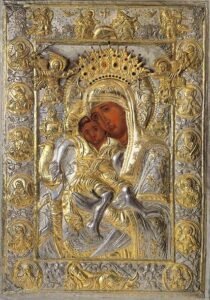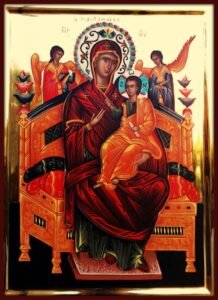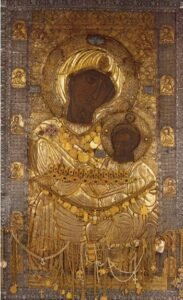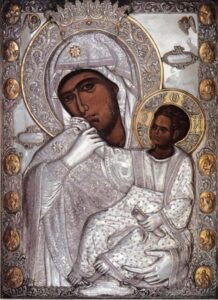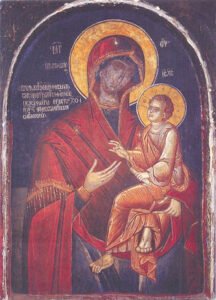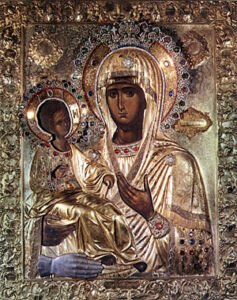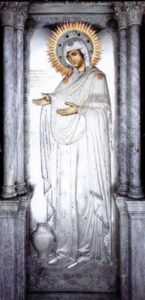ATHONITE ICONS OF THE THEOTOKOS
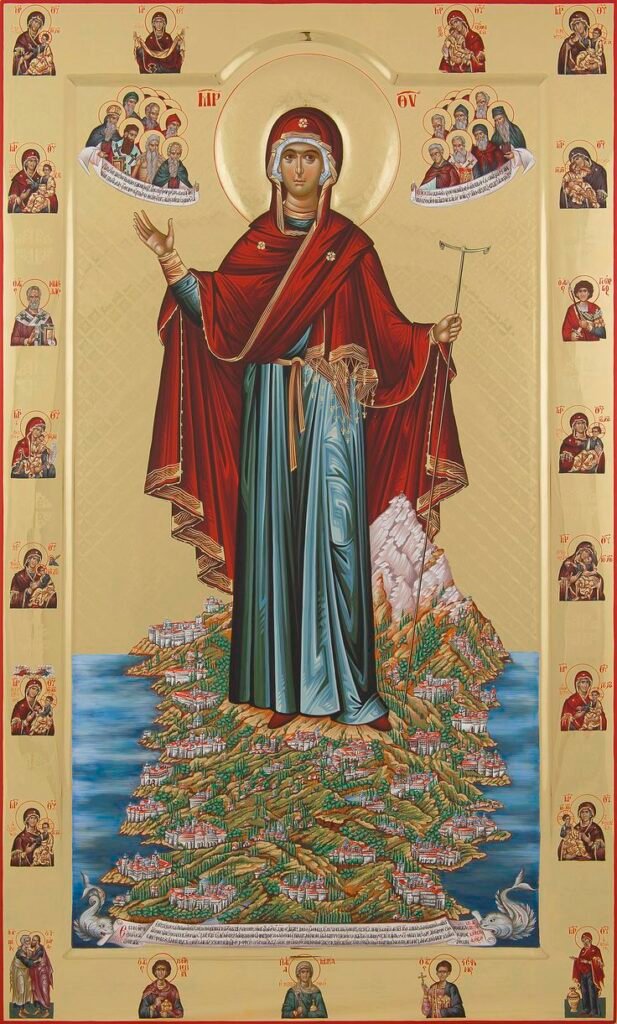
Mount Athos as a monastic community was formally founded in 963, when St. Athanasius (not to be confused with the 4th century St. Athanasius) established the monastery of Great Lavra, still the largest and most prominent of the 20 monasteries. It enjoyed the protection of the emperors of the Eastern Roman Empire during the following centuries and its wealth and possessions grew considerably. The Fourth Crusade in the 13th century brought new Roman Catholic overlords which forced the monks to seek protection from Pope Innocent III, until the restoration of the Byzantine Empire. It was raided by Catalan mercenaries in the 14th century, a century that also saw the theological conflict over the hesychasm practised on Mount Athos and defended by St.Gergory Palamas.
The Byzantine Empire collapsed in the 15th century and the newly established Islamic Ottoman Empire took over. They heavily taxed the monasteries, but for the most part left them alone. The population of monks and their wealth declined over the next centuries, but was revitalized around the 19th century by the donations and new arrivals from other Orthodox countries, such as Russia, Bulgaria, Romania and Serbia, while each country came to exert its influence on individual monasteries. In 1912, during the First Balkan War, the Ottomans were forced out and after a brief conflict between Greece and Russia over sovereignty, the peninsula formally came under Greek sovereignty after World War I.
Politically the peninsula is mostly self-governed and consists of 20 main monasteries and the capital city and administrative center, Karyes, also home to a governor as the representative of the Greek state. Beyond the monasteries there are 12 sketes, which are dependent communities of a monastery, as well as many (solitary) hermitages throughout the peninsula. Visits to the peninsula are possible for laymen, but they need special permission.
Women are completely barred from the peninsula, a fact which has earned a certain amount of fame; even female domestic animals (with the exception, some say, of cats, as well as chickens which lay eggs that provide the fresh egg yolk needed for the paint used in iconography) are forbidden. However, during the Greek Civil War, Athos did shelter refugees including women and girls. The reason for the ban are various miracles of the Mother of God when she shown her desire in this matter and, also, a canon forbidding male visitors to enter female monasteries, and female visitors to male monasteries. While not observed in most monasteries today, Athos is by no means unique in its enforcement of the rule. Unique to Athos is the fact that, due to the whole peninsula being devoted to the monastic vocation, the rule is observed also outside the monastery walls.
In modern times, the Mount Athos monasteries have repeatedly been struck by wildfires, e.g. in August 1990, and in March 2004, fire gutted a large section of the Serbian monastery, chilandari. Due to the secluded locations of the monasteries as well as the unavailability of suitable fire fighting gear, the damages inflicted by these fires are often considerable.
Excerpt from orthodoxwiki, links to full article, various wonderworking icons, a video showing various icons from Athos and the Mount Athos website.
VARIOUS WONDER WORKING ATHONITE ICONS OF THE MOTHER OF GOD
